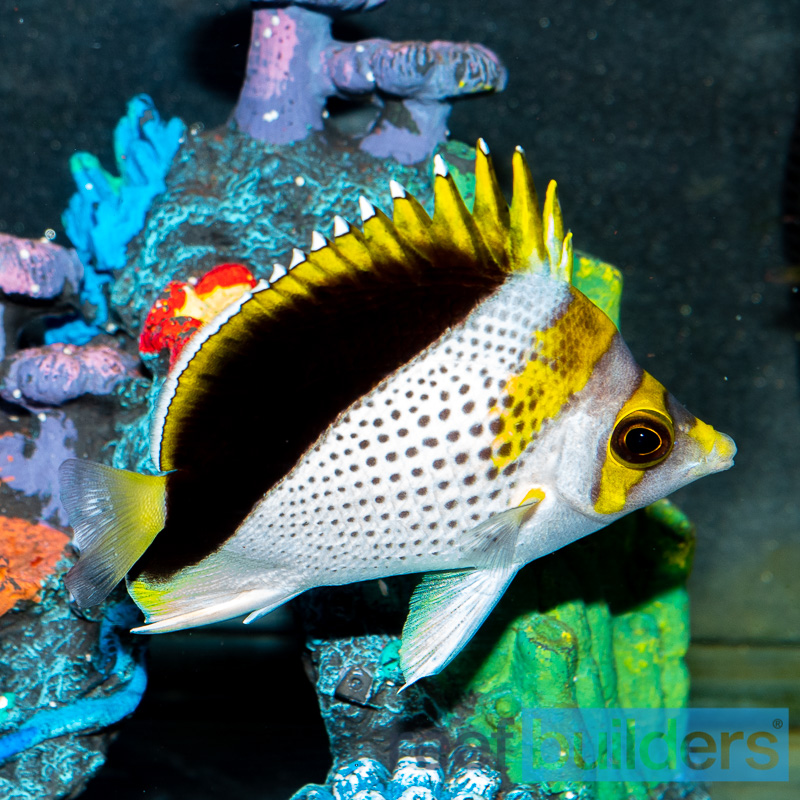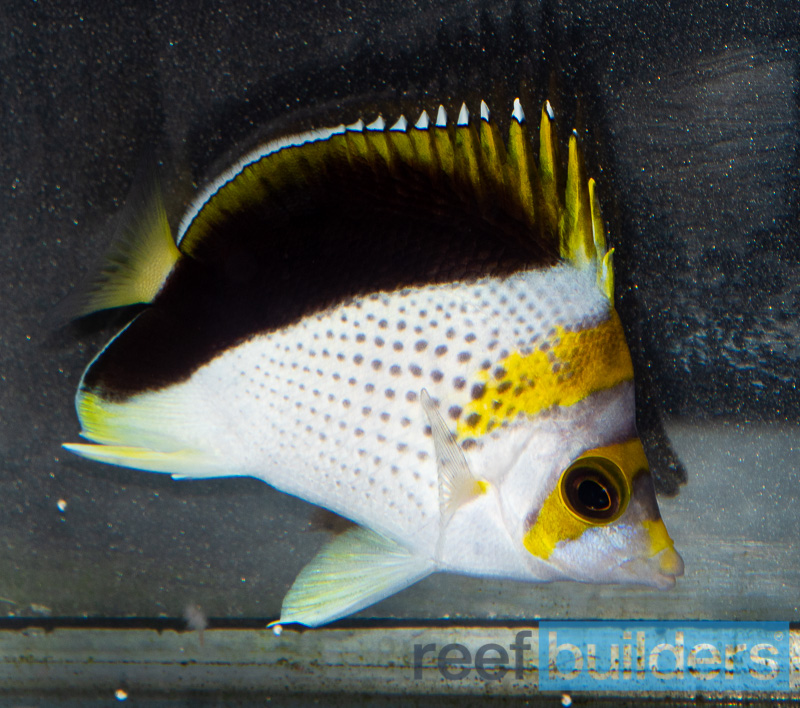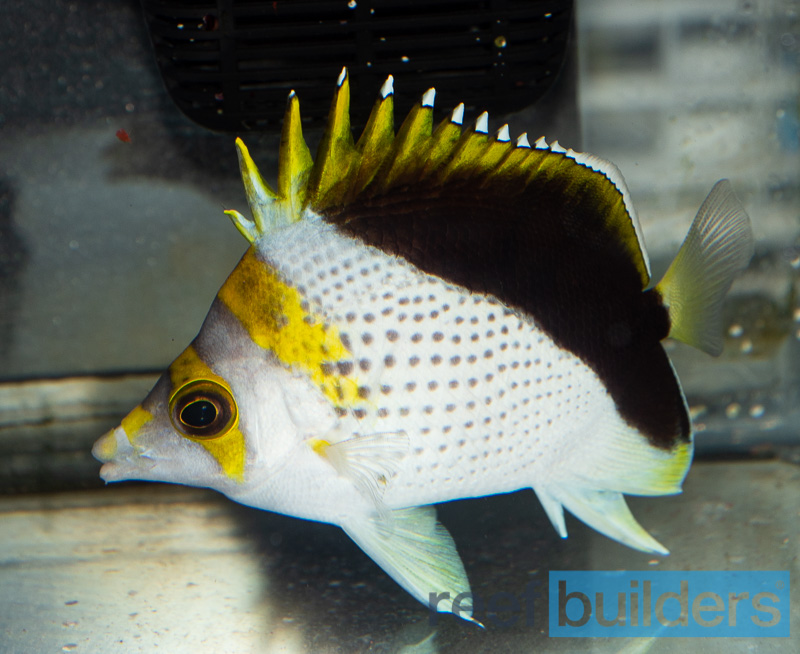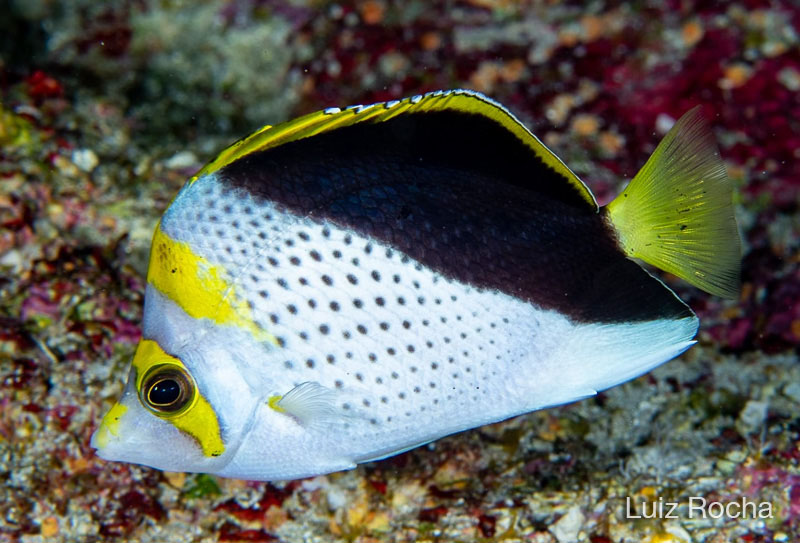The gold crown butterflyfish, Chaetodon flavocoronatus, is one of the rarest species of butterflyfish that we’ve been writing about since 2009, but had never seen for ourselves until last week. Closely related to the tinker’s butterflyfish from Hawaii, the declivis butterflyfish from the Central Pacific, and the burgess butterflyfish with a much broader range, C. flavocoronatus is known primarily from Guam and the Mariana Islands.
But the natural range and boundaries between these species appears to be quite soft with many examples of different hybrids appearing over the years including the ‘dirty burgess’, various tinker’s hybrids and it’s hard to know where the species ranges are really delineated. Sometimes the specimens we come across exhibit more features one species than the other and that’s what we believe is going on with this ‘clean’ specimen gold crown butterflyfish we acquired from Sea Dwelling Creatures for the Reef Builders Studio last week.
Famed twilight zone explorer and ichthyologist Dr. Luiz Rocha shared some of his original images of pure gold crown butterflyfish from Guam and you can see how the crown is brighter yellow with little to no dark patches in the crown, but it doesn’t extend down quite to the pectoral like the fish that we’re now looking after. Furthere supporting a touch of genetic mixing is the light saffron yellow coloration of the pelvic and anal fins seen in C. burgessi but which is pure white in ideal specimens of C. flavocoronatus.
With no collections or exports from Guam this specimen of the gold crown butterflyfish is as close as we’re ever likely to get to seeing C. flavocoronatus for ourselves let alone enjoying one in our personal aquariums. This small butterflyfish is still exhibiting some vestiges of juvenile coloration and shape and we look forward to growing it into a six inch show specimen like our true Hawaiian Tinker’s butterflyfish in our current saltwater fish display, and hopefully we can get them both to live harmoniously in the future.







